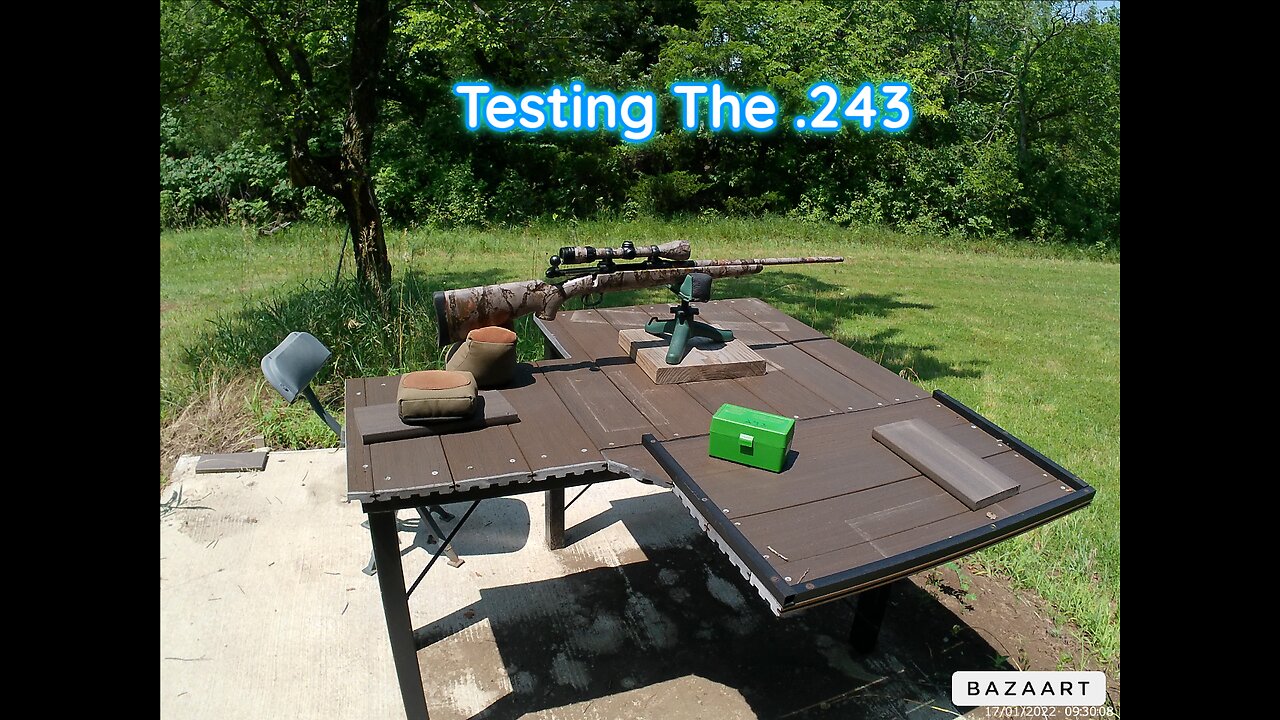Premium Only Content

243 Winchester load testing.
Load development" typically refers to the process of carefully developing and refining a specific ammunition load for a firearm. This is important for achieving optimal accuracy, consistency, and reliability in shooting sports such as competitive shooting or hunting. Here’s a general outline of how load development is typically approached:
Objective Setting: Define the purpose of the load. Is it for long-range accuracy, hunting, target shooting, or something else? This will guide the choices you make during development.
Components Selection:
Bullet: Choose a bullet weight and type suitable for your intended use and the firearm’s twist rate.
Powder: Select an appropriate powder type and charge weight based on the bullet weight, firearm characteristics, and desired performance.
Primer: Choose a primer that is compatible with the powder and cartridge.
Starting Load: Begin with a conservative starting load. This is typically a load that is well below the maximum published load data for safety reasons.
Incremental Testing: Gradually increase the powder charge in small increments while carefully measuring key parameters like velocity, pressure signs (such as case head expansion or primer flattening), and accuracy.
Testing Protocol: Use a consistent protocol for testing, including shooting from a stable platform (such as a rifle rest), maintaining consistent shooting conditions, and recording detailed results for each test.
Accuracy Testing: Once you’ve identified potential loads that are safe and reliable, focus on accuracy testing. This involves shooting groups from a benchrest or other stable shooting position to determine which loads perform best in terms of grouping.
Fine-Tuning: Refine the load further based on accuracy and consistency. This may involve minor adjustments to the powder charge, seating depth of the bullet, or other variables.
Validation: Validate the chosen load over different environmental conditions (temperature, humidity) and possibly over multiple firearms of the same model if applicable.
Record Keeping: Maintain detailed records of each load tested, including components used, performance metrics (velocity, accuracy), and any observations that may be useful for future reference.
Safety Considerations: Throughout the process, prioritize safety. Always adhere to published load data, use proper reloading techniques, and be vigilant for signs of excessive pressure.
Load development is both a science and an art, requiring patience, meticulous attention to detail, and an understanding of ballistic principles. It’s a rewarding process that can significantly enhance shooting performance when done correctly.
-
 DVR
DVR
Chad Prather
12 hours agoApplying The POWER Of Christ To Your Life!
18.6K14 -
 LIVE
LIVE
LFA TV
12 hours agoLIVE & BREAKING NEWS! | FRIDAY 11/7/25
2,917 watching -
 1:05:59
1:05:59
Crypto Power Hour
12 hours ago $0.03 earnedTop 10 Cryptocurrency Staking Platforms
22.2K9 -
 35:53
35:53
Mike Rowe
1 day agoBreaking Down Bill Gates' 3 Tough Truths About Climate | Alex Epstein #457 | The Way I Heard It
38.2K39 -
 23:22
23:22
Stephen Gardner
1 day ago🚨BREAKING: Mamdani Won and What Trump EXPOSES About It is SHOCKING!!
23.8K123 -
 1:16:41
1:16:41
Steve-O's Wild Ride! Podcast
20 hours ago $0.04 earnedAdam Ray Absolutely Kills Steve-O | Wild Ride #273
19.6K4 -
 37:22
37:22
efenigson
1 day agoWhat COVID Taught Me About Money & Control - Efrat Fenigson | Ep. 104
14.3K3 -
 1:20:56
1:20:56
Dialogue works
2 days ago $0.53 earnedCol. Larry Wilkerson: No Way Out for Israel - Iran & Russia — NATO’s Worst Fear
35.5K13 -
 10:37
10:37
TheSaltyCracker
19 hours agoMassive Brawl Breaks Out in Bass Pro Shop Over Bathroom
42.3K157 -
 16:40
16:40
Actual Justice Warrior
16 hours agoSydney Sweeney REFUSES To Apologize For Being White
30.5K46